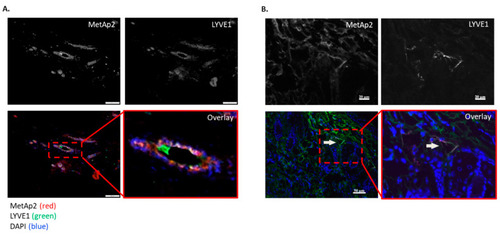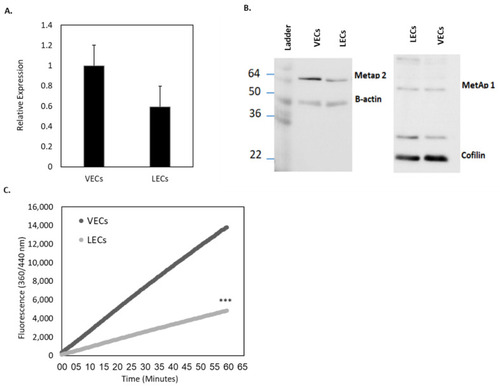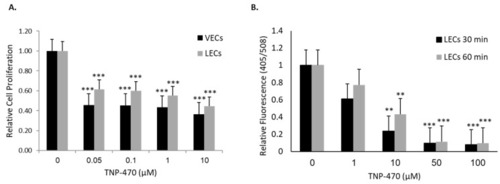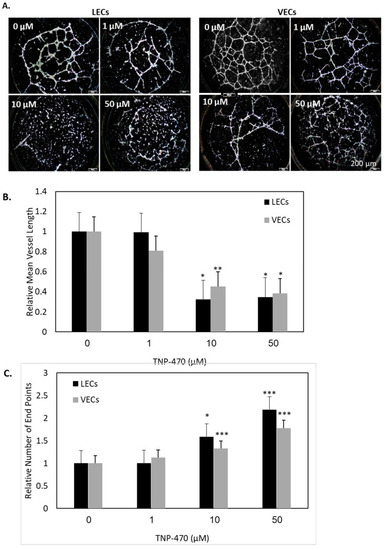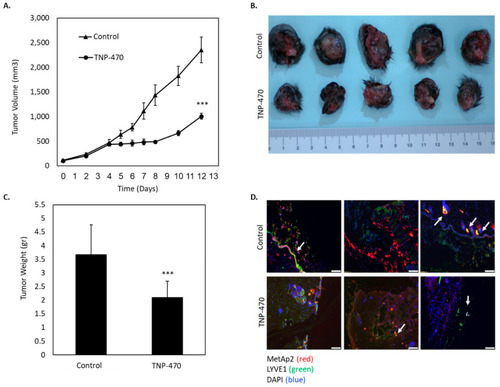- Title
-
The Role of Methionine Aminopeptidase 2 in Lymphangiogenesis
- Authors
- Esa, R., Steinberg, E., Dror, D., Schwob, O., Khajavi, M., Maoz, M., Kinarty, Y., Inbal, A., Zick, A., Benny, O.
- Source
- Full text @ Int. J. Mol. Sci.
|
Cancer tissue samples retrieved from two breast cancer patients express MetAp2 and LYVE1. ( |
|
Basal MetAp2 activity and expression in LECs compared with VECs. ( |
|
MetAp2 inhibition affects the activity and expression of MetAp2 in LECs. ( |
|
Inhibition of VEC and LEC proliferation and adhesion induced by the inhibition of MetAp2. ( |
|
MetAp2 inhibition blocked tube formation in VECs and LECs. ( |
|
Reduction in the lymphatic vasculature in TNP-470-treated zebrafish embryos carrying the |
|
MetAp2 inhibition suppresses the growth of murine melanoma tumors. C57/BL6J mice were injected S.C. with B16/F10 cells, overexpressing VEGF-C (1.5 × 106 cells/tumor). The mice were divided into two groups, untreated and treated with TNP-470 (30 mg/kg q.o.d). |

